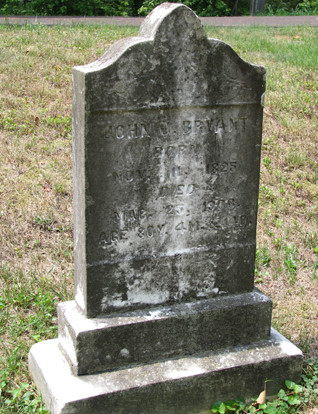|
|
How to Clean a Tombstone

Preserving our heritage through tombstone preservation is a growing
concern for many.
A walk through a cemetery will soon reveal
that very few tombstones last more than a
150 years before the words become so worn that they are illegible. And the
stone itself will eventually decay and crumble.
If you want to preserve the memory of your loved ones through tombstone
preservation, use only the safest and most careful practices when cleaning
the stone.
Supplies needed:
--water
--soft bristle white brush
--plastic spatula or
wooden popsicle sticks
to scrape lichen and mold
--elbow grease
--non-ionic liquid (wetting agent), optional
--biocide, optional
DO NOT USE beach or harsh abrasives
Stone is made of a combination of minerals and salts. Therefore, using
chemicals of any kind, such as chlorine bleach or even household soap, can
cause leaching of the surface of the stone.
- Collect supplies together.
You will need lots of water, so fill up as many gallon jugs as you
can find. You will also need soft bristle, white brushes. If the
stone is in really bad condition, you may want to use a wetting
agent--not soap--known as non-ionic soap. The brand called Orvus,
which is considered an equine soap, is suitable for cleaning
headstones, as is Photo-Flo, used in development of photographs.
A biocide may used, if you prefer, to prevent the growth of fungi
and molds. However, the effectiveness of a biocide usually lasts
only a year, and since it is not recommended that stones be cleaned
more than every 10 years, the use of a biocide may not be worth it
in the long run.
If the stone is really old and has become encrusted with lichen, you
will want to scrape the stone with plastic or wood to remove the
lichen. Use water liberally while doing this procedure.
- Soak the tombstone thoroughly with water.
Because you don't want to damage the surface of the stone, no matter
what its age, you will want to keep the stone lubricated with water
at all times while you are cleaning it. If you choose to use a
wetting agent, non-ionic soap, you will want to pour the recommended
amount into the recommended amount of water and wet the stone. Allow
the stone to soak for several minutes.
- Clean from the bottom up.
Cleaning from the top down will release acids and pigments from the
molds and lichens. These will run down the stone, sitting there
until you get to that area; therefore, further stains and damage may
occur.
- Brush lightly.
White bristle scrubbing brushes and soft toothbrushes are
appropriate tools for cleaning tombstones that are soiled or have
spots of lichen on them. Gently brush, allowing the water to soak
through and soften layers of soil and lichen.
It is better to leave difficult lichen on the stone than to harshly
remove it, exposing a fragile surface underneath.
- Rinse thoroughly.
To make certain that all loose soil and lichen are removed, rinse
thoroughly with clean water.
|
|